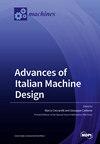基于 PID 的排队卡车纵向控制
IF 2.1
3区 工程技术
Q3 ENGINEERING, ELECTRICAL & ELECTRONIC
引用次数: 0
摘要
本文重点研究了一种基于pid的卡车队列纵向控制算法的开发和评估。本研究采用嵌套结构的线性控制器,其中内环调节相对速度,外环控制排内车辆间距离。所提出的PID控制器的设计需要全面关注系统识别,特别是强调驱动动力学。本研究中使用的仿真框架是通过TruckSim®和Simulink®的集成建立的,从而形成了一个联合仿真环境。Simulink®作为控制动作实施的平台,而TruckSim®模拟车辆的动态行为,从而密切复制现实世界的条件。详细描述了PID控制器微调的重要工作,包括卡车线性化纵向动力学模型的系统识别。实现之后是一系列广泛的仿真测试,系统地评估控制器的性能、稳定性和鲁棒性。结果验证了该控制器在各种领先卡车操作场景中的有效性。此外,还评估了该控制器对商用车常见的路面坡度和有效载荷重量大波动的鲁棒性。仿真结果表明,该控制器具有补偿路面坡度和有效载荷变化的能力。此外,通过比较命令控制努力(车轮上的总扭矩)和总燃料消耗,对控制器的效率进行初步评估。这一初步分析表明,控制者表现出最小的攻击性倾向。本文章由计算机程序翻译,如有差异,请以英文原文为准。
PID-Based Longitudinal Control of Platooning Trucks
This article focuses on the development and assessment of a PID-based computationally cost-efficient longitudinal control algorithm for platooning trucks. The study employs a linear controller with a nested architecture, wherein the inner loop regulates relative velocities while the outer loop governs inter-vehicle distances within platoon vehicles. The design of the proposed PID controller entails a comprehensive focus on system identification, particularly emphasizing actuation dynamics. The simulation framework used in this study has been established through the integration of TruckSim® and Simulink®, resulting in a co-simulation environment. Simulink® serves as the platform for control action implementation, while TruckSim® simulates the vehicle’s dynamic behavior, thereby closely replicating real world conditions. The significant effort in fine-tuning the PID controller is described in detail, including the system identification of the linearized longitudinal dynamic model of the truck. The implementation is followed by an extensive series of simulation tests, systematically evaluating the controller’s performance, stability, and robustness. The results verify the effectiveness of the proposed controller in various leading truck operational scenarios. Furthermore, the controller’s robustness to large fluctuations in road grade and payload weight, which is commonly experienced in commercial vehicles, is evaluated. The simulation results indicate the controller’s ability to compensate for changes in both road grade and payload. Additionally, an initial assessment of the controller’s efficiency is conducted by comparing the commanded control efforts (total torque on wheels) along with the total fuel consumed. This initial analysis suggests that the controller exhibits minimal aggressive tendencies.
求助全文
通过发布文献求助,成功后即可免费获取论文全文。
去求助
来源期刊

Machines
Multiple-
CiteScore
3.00
自引率
26.90%
发文量
1012
审稿时长
11 weeks
期刊介绍:
Machines (ISSN 2075-1702) is an international, peer-reviewed journal on machinery and engineering. It publishes research articles, reviews, short communications and letters. Our aim is to encourage scientists to publish their experimental and theoretical results in as much detail as possible. There is no restriction on the length of the papers. Full experimental and/or methodical details must be provided. There are, in addition, unique features of this journal: *manuscripts regarding research proposals and research ideas will be particularly welcomed *electronic files or software regarding the full details of the calculation and experimental procedure - if unable to be published in a normal way - can be deposited as supplementary material Subject Areas: applications of automation, systems and control engineering, electronic engineering, mechanical engineering, computer engineering, mechatronics, robotics, industrial design, human-machine-interfaces, mechanical systems, machines and related components, machine vision, history of technology and industrial revolution, turbo machinery, machine diagnostics and prognostics (condition monitoring), machine design.
 求助内容:
求助内容: 应助结果提醒方式:
应助结果提醒方式:


